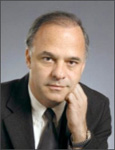Nanotechnology of Concrete: A Key Step in the Development of Sustainable Construction
 SEMM SEMINAR
SEMM SEMINAR
This seminar is sponsored by the Pacific Earthquake Engineering Research Center
Paulo J.M. Monteiro
Department of Civil & Environmental Engineering
University of California at Berkeley
Monday, November 22, 2010 12:00-1:00 pm in 502 Davis Hall
Presentation file (PDF - 18.1 MB)
Abstract: The present status of the cement and concrete industry is not sustainable. The production of Portland cement is responsible for 7% of the CO2 emission in the world and existing reinforced concrete infrastructure is deteriorating at a fast pace. In conjunction with this ever-increasing need for enlarging the built environment is the bleak future facing our aging civil infrastructure. Corrosion, frost action, sulfate attack, and cracking due to alkali silica reaction have significantly reduced the life cycle of buildings, bridges, dams, roads and marine structures. For instance, of the 597,340 bridges in this country, 73,784 or about 12.4 percent are structurally deficient. To change existing technology requires new developments in the understanding of nanostructure of the hydration products and of the complex deterioration reactions.
Our research group has been developing new equipment using synchrotron radiation to characterize the nano and microstructure of cement paste and concrete exposed to aggressive environments. I will discuss why soft X-ray microscopy is providing new insights on the cement hydration and on deleterious reactions. Recent developments on nanotomography with resolution of 20 nm will also be presented. Next, the talk will focus on how to measure the mechanical properties of crystals and nanocrystals at the atomic level. The final part of the presentation will be dedicated to exploring how this new understanding can be used to produce more durable reinforced concrete structures.
Speaker: Prof. Paulo Monteiro is the Roy W. Carlson Distinguished professor in Civil and Environmental Engineering at the U.C. Berkeley. He has worked on various aspects of concrete technology, such as thermal stresses, creep of concrete, alkali-aggregate reaction, corrosion of reinforced concrete, sulfate attack, and modeling of the concrete microstructure. Professionally, he has worked on the design of large concrete dams, high performance bridges and on the development of sustainable cements. Recently he has received the following awards for this research: Premio Ari Torres, Brunauer Award and Wason Medal for Materials Research.
Please consult the seminar web page for future updates: http://www.ce.berkeley.edu.
posted November 18, 2010

